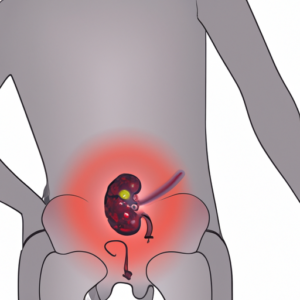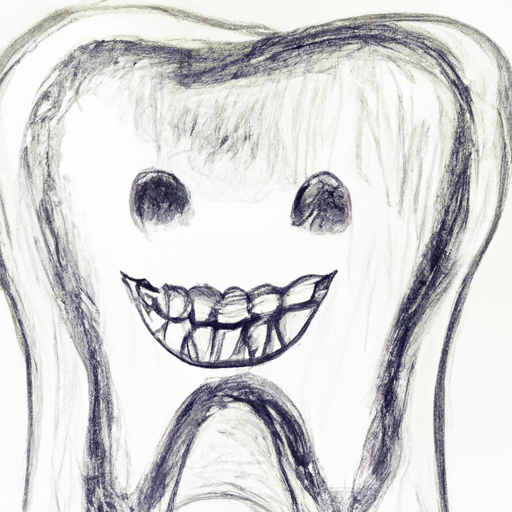Chronic obstructive pulmonary disease (COPD) is a prevalent and debilitating respiratory condition that affects millions of individuals worldwide. It is a progressive disease that causes obstruction in the airways, making it difficult for individuals to breathe properly. COPD is primarily caused by long-term exposure to irritants, such as tobacco smoke and air pollution. In this article, we will delve into the various aspects of COPD, including its causes, symptoms, and diagnosis. We will also explore the available treatment options and lifestyle changes that can help manage the condition and improve the quality of life for those living with COPD. Additionally, we will discuss the importance of prevention and awareness in reducing the risk of developing COPD. By understanding the complexities of this disease and implementing effective strategies, we can strive towards a healthier and more informed society.
1. Understanding Chronic Obstructive Pulmonary Disease (COPD): Causes, Symptoms, and Diagnosis
Chronic obstructive pulmonary disease (COPD) is a progressive lung disease that affects millions of people worldwide. It is characterized by persistent airflow limitation and is primarily caused by long-term exposure to harmful particles or gases, most commonly from cigarette smoke. Understanding the causes, symptoms, and diagnosis of COPD is crucial for early detection and effective management of this debilitating condition.
The primary cause of COPD is smoking, accounting for approximately 80-90% of all cases. Other factors, such as exposure to secondhand smoke, air pollution, occupational dust and chemicals, and genetic predisposition, can also contribute to the development of COPD. Smoking damages the airways and air sacs in the lungs, causing inflammation and narrowing of the air passages, which leads to the characteristic symptoms of COPD.
Symptoms of COPD typically develop gradually and worsen over time. The most common symptoms include shortness of breath, chronic cough with sputum production, wheezing, and chest tightness. These symptoms may initially be mild and dismissed as a normal part of aging or being out of shape, but as the disease progresses, they can significantly impact an individual’s quality of life and ability to perform daily activities.
Diagnosing COPD involves a combination of medical history, physical examination, and pulmonary function tests. The medical history will assess the patient’s risk factors, exposure to respiratory irritants, and any relevant symptoms. During a physical examination, healthcare professionals may listen to the patient’s lungs using a stethoscope to detect abnormal breath sounds, as well as assess overall lung function. Pulmonary function tests, such as spirometry, measure the amount of air a person can exhale forcefully after taking a deep breath, helping to confirm the presence of airflow limitation characteristic of COPD.
Once diagnosed, the management of COPD aims to alleviate symptoms, slow disease progression, and improve overall lung function. The cornerstone of treatment involves smoking cessation, as quitting smoking is the most effective way to slow the progression of the disease. Medications, including bronchodilators to relax the airway muscles and reduce inflammation, and inhaled corticosteroids, may be prescribed to help manage symptoms. Pulmonary rehabilitation programs, which include exercise training, breathing exercises, and education, can enhance lung function and improve quality of life. In severe cases, surgical interventions, such as lung volume reduction surgery or lung transplantation, may be considered.
In conclusion, understanding the causes, symptoms, and diagnosis of COPD is crucial for both patients and healthcare professionals. Early detection and appropriate management can significantly improve outcomes and enhance the quality of life for individuals living with
2. Managing COPD: Treatment Options and Lifestyle Changes for Better Quality of Life
Managing COPD: Treatment Options and Lifestyle Changes for Better Quality of Life
Living with chronic obstructive pulmonary disease (COPD) can be challenging, but with the right treatment options and lifestyle changes, individuals can improve their quality of life and manage their symptoms effectively. COPD is a progressive lung disease that causes breathing difficulties and can significantly impact daily activities. Here we will explore various treatment options and lifestyle changes that can help individuals with COPD lead a fulfilling life.
1. Medications: Medications play a crucial role in managing COPD symptoms. Bronchodilators are commonly prescribed to relax the muscles around the airways, allowing easier breathing. Inhalers, both short-acting and long-acting, are often used for quick relief or regular maintenance. Corticosteroids help reduce inflammation in the airways and are typically prescribed for severe cases or during exacerbations. Antibiotics may also be necessary in case of a respiratory infection.
2. Oxygen Therapy: For individuals with low blood oxygen levels, supplemental oxygen therapy may be recommended. This therapy involves inhaling oxygen through a mask or nasal prongs to improve oxygenation and alleviate breathlessness.
3. Pulmonary Rehabilitation: Pulmonary rehabilitation programs are designed to improve the overall physical condition of individuals with COPD. These programs often include exercise training, breathing exercises, nutritional counseling, and education about managing symptoms. Pulmonary rehabilitation can significantly enhance lung function, reduce symptoms, and improve overall well-being.
4. Surgical Options: In some cases, surgical interventions may be considered for individuals with severe COPD. Lung volume reduction surgery removes damaged portions of the lungs, allowing the remaining healthy lung tissue to function more efficiently. Lung transplantation is also an option for individuals with end-stage COPD when other treatments have been unsuccessful.
Alongside medical treatments, lifestyle changes are essential for managing COPD and improving quality of life. Here are some important lifestyle modifications:
1. Quit Smoking: Smoking cessation is the most crucial step in managing COPD. Continued smoking will only worsen symptoms and accelerate the progression of the disease. Quitting smoking can significantly slow down the decline in lung function and improve overall health. Various smoking cessation programs, medications, and support groups are available to assist individuals in this process.
2. Regular Exercise: Engaging in regular physical activity can help strengthen the respiratory muscles, improve lung capacity, and enhance overall endurance. Exercise also contributes to weight management, improves mood, and reduces the risk of other health conditions. It is important to consult with healthcare professionals before starting any exercise program to ensure safety and appropriateness.
3. Healthy Diet: A well-balanced diet is vital for COPD
3. Prevention and Awareness: Key Strategies to Reduce the Risk of COPD
Prevention and Awareness: Key Strategies to Reduce the Risk of COPD
Chronic obstructive pulmonary disease (COPD) is a progressive lung condition that affects millions of people worldwide. While there is no cure for COPD, there are several preventive measures and strategies that individuals can undertake to reduce their risk of developing this debilitating disease. Additionally, raising awareness about COPD is crucial in order to promote early diagnosis and timely treatment. Here are some key strategies to prevent COPD and increase awareness about its risks:
1. Avoid Tobacco Smoke: Tobacco smoke is the leading cause of COPD, responsible for nearly 90% of all cases. Quitting smoking or not starting in the first place is the most effective way to prevent COPD. If you are a smoker, seek professional help and adopt cessation strategies such as nicotine replacement therapy, counseling, or support groups. By quitting smoking, you can significantly reduce your risk of developing COPD and improve your overall lung health.
2. Reduce Exposure to Environmental Pollutants: In addition to smoking, long-term exposure to environmental pollutants can also contribute to the development of COPD. These pollutants include secondhand smoke, occupational dust and chemicals, air pollution, and indoor biomass fuels. It is important to take necessary precautions to minimize exposure to these harmful substances. This can include using air filters, wearing protective masks in polluted areas or workplaces, and ensuring proper ventilation in living spaces.
3. Practice Good Respiratory Hygiene: Maintaining good respiratory hygiene can help reduce the risk of respiratory infections, which can worsen COPD symptoms. Frequent handwashing, avoiding close contact with sick individuals, and getting vaccinated against influenza and pneumonia are all important preventive measures. By minimizing the risk of respiratory infections, individuals with COPD can prevent exacerbations and maintain better lung function.
4. Regular Exercise and Healthy Lifestyle: Staying physically active and leading a healthy lifestyle can greatly improve lung health and reduce the risk of COPD. Regular exercise helps strengthen the respiratory muscles and improves lung capacity. It also aids in maintaining a healthy weight and preventing comorbidities associated with COPD, such as cardiovascular diseases. Additionally, following a balanced diet rich in fruits, vegetables, and whole grains can provide essential nutrients and antioxidants that support lung health.
5. Increase Awareness and Education: Increasing public awareness about COPD is essential in order to promote early diagnosis and timely treatment. Many individuals may not be aware of the symptoms and risk factors associated with COPD, leading to delayed diagnosis and progression of the disease. By educating the general public, healthcare professionals, and policymakers about COPD, its causes, symptoms, and available treatments, we





